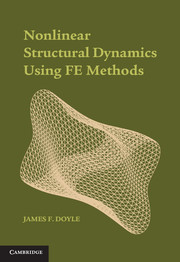Introduction
Published online by Cambridge University Press: 05 October 2014
Summary
Those who have meditated on the beauty and utility of the general method of Lagrange – who have felt the power and dignity of that central dynamical theorem which he deduced from a combination of the principle of virtual velocities with the principle of D'Alembert – and who have appreciated the simplicity and harmony which he introduced by the idea of the variation of parameters, must feel the unfolding of a central idea.
W. R. Hamilton [41]Structures are to be found in various shapes and sizes for various purposes and uses. These range from the human-made structures of bridges carrying traffic, buildings housing offices, and airplanes carrying passengers all the way down to the biologic structures of cells and proteins carrying genetic information. Structural mechanics is concerned with the behavior of structures under the action of applied loads – their deformations and internal loads. We present, in the following chapters, versatile methods to tackle some of the most common (and most difficult) problems facing engineers in the analysis of structures. This volume specifically considers the situations where the loads vary in time such that inertia effects are important in computing the responses.
The modeling of the dynamic response of structures introduces many additional considerations not anticipated from a static analysis. It is therefore worth our while to say just a little about structural dynamics and its place in structural analyses. The subject of rigid-body dynamics treats physical objects as bodies that undergo motion without any change of shape.
- Type
- Chapter
- Information
- Nonlinear Structural Dynamics Using FE Methods , pp. 1 - 4Publisher: Cambridge University PressPrint publication year: 2014

